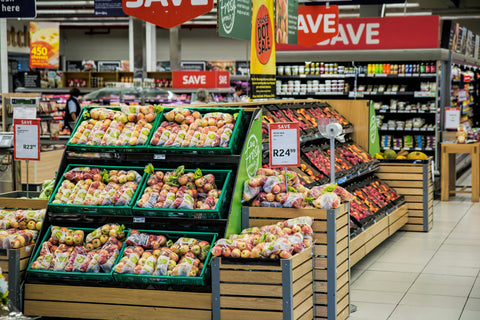Share
There’s nothing more frustrating than buying fresh fruit and vegetables, only to find them wilted or spoiled after just a few days. Proper storage can make all the difference—not only does it help reduce waste, but it also saves you money and keeps your meals tasting their best.
At Mon Panier Latin, we know how important fresh produce is to your kitchen. That’s why we’ve put together a practical guide to help you store your fruits and vegetables correctly, so they stay fresher for longer.
General Tips for Storing Fresh Produce
Before diving into specific fruits and vegetables, here are a few golden rules to keep in mind:
• Separate ethylene producers from others: Some fruits, such as bananas, apples, and tomatoes, release ethylene gas, which speeds up ripening. Keep them apart from more delicate produce.
• Don’t wash before storing: Washing adds moisture, which can cause mould. Instead, wash right before eating or cooking.
• Use breathable bags: Plastic traps moisture and accelerates spoilage. Opt for paper bags or reusable cloth produce bags when possible.

Fruits and How to Store Them
Bananas
Keep bananas at room temperature. If you want them to ripen more slowly, separate them from the bunch and wrap the stems in foil or cling film.
Apples and Pears
These fruits prefer cool temperatures. Store them in the fridge, but away from leafy greens, as the ethylene they release will cause vegetables to spoil faster.
Berries (strawberries, blueberries, raspberries)
Berries are delicate and prone to mould. Store them unwashed in a shallow container lined with kitchen paper. Wash only before eating.
Grapes
Keep grapes in their original perforated bag in the fridge. A quick rinse before eating is all they need.
Citrus Fruits (oranges, lemons, limes)
Citrus can be kept at room temperature for about a week. For longer storage, refrigerate them in the vegetable drawer.
Vegetables and How to Store Them
Leafy Greens (spinach, lettuce, kale)
Wash and dry thoroughly, then wrap in a paper towel and place in a resealable bag in the fridge. The paper towel absorbs excess moisture, keeping the leaves crisp.
Carrots and Celery
Remove the tops from carrots as they draw moisture from the root. Store both carrots and celery in an airtight container with a little water at the bottom to keep them crunchy.
Potatoes and Onions
Never store potatoes and onions together—potatoes will sprout faster. Potatoes should be kept in a cool, dark cupboard, while onions need a dry, ventilated space.
Tomatoes
Keep tomatoes at room temperature, away from direct sunlight. Refrigerating them can make their texture mealy and dull the flavour.
Cucumbers and Courgettes
These prefer slightly warmer conditions than most vegetables. Store them in the fridge, but not in the coldest section.

Extra Tips to Reduce Waste
• Revive wilted greens: Place them in a bowl of ice water for 10 minutes to bring them back to life.
• Use your freezer: Many vegetables (like spinach, peppers, or broccoli) and fruits (like bananas or berries) can be chopped and frozen for later use in soups, smoothies, or sauces.
• Rotate your produce: Always use the older items first to avoid forgetting them at the back of the fridge.
Storing fruits and vegetables correctly isn’t complicated—it’s about knowing the little tricks that make a big difference. By following these simple steps, you’ll keep your produce fresh for longer, save money, and reduce food waste.



